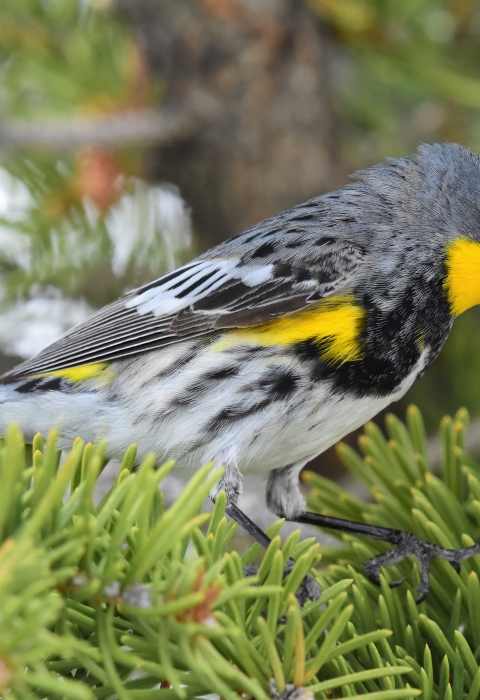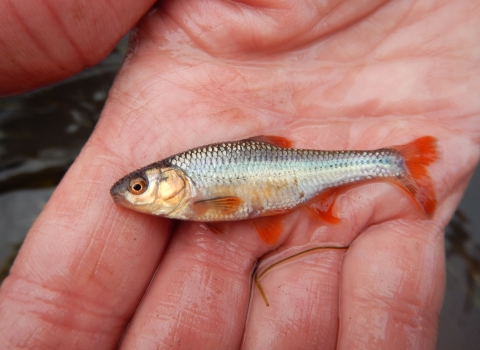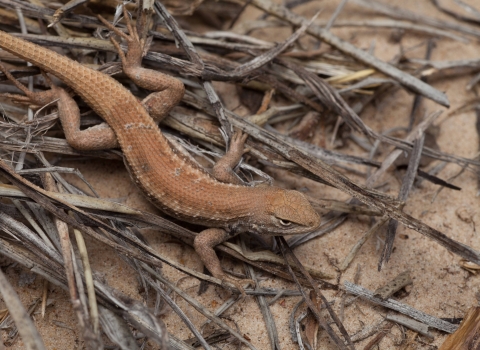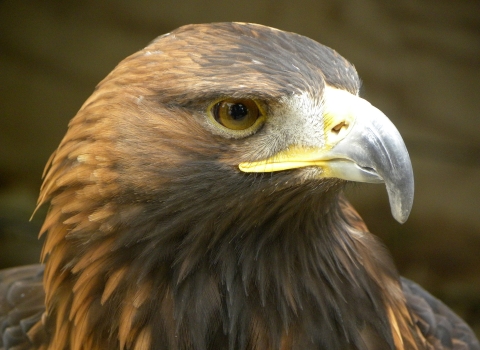Today, the U.S. Fish and Wildlife Service is announcing more than $22 million in funding has been approved for grants through the Neotropical Migratory Bird Conservation Act for conservation projects to benefit migratory birds and people throughout the Americas.
For over two decades, the Neotropical Migratory Bird Conservation Act has provided critical support for neotropical bird conservation and research throughout the Western Hemisphere each year. It is the only source of federal funding solely dedicated to the conservation of migratory birds shared throughout the Americas. This year, more than $4.87 million in federal funds will be matched by more than $17 million in partner contributions going to 30 collaborative conservation projects in 19 countries across the Americas.
“These investments will help neotropical birds that are at risk and are declining, protecting millions of acres of diverse habitats needed by grassland birds, forest birds and shorebirds for wintering, breeding and migration,” said Service Director Martha Williams. “Neotropical migratory birds capture our imagination, yet they face an increasingly complex range of threats, including development pressures, invasive species invasive species
An invasive species is any plant or animal that has spread or been introduced into a new area where they are, or could, cause harm to the environment, economy, or human, animal, or plant health. Their unwelcome presence can destroy ecosystems and cost millions of dollars.
Learn more about invasive species , avian diseases and climate change climate change
Climate change includes both global warming driven by human-induced emissions of greenhouse gases and the resulting large-scale shifts in weather patterns. Though there have been previous periods of climatic change, since the mid-20th century humans have had an unprecedented impact on Earth's climate system and caused change on a global scale.
Learn more about climate change .”
NMBCA benefits most of the 390 species of neotropical migratory birds that migrate across the Western Hemisphere, to and from the U.S. each year. Priority is given to funding projects that proactively conserve species listed on the Service’s Birds of Conservation Concern 2021report to prevent species from being listed as threatened or endangered under the Endangered Species Act. In addition, at least 7 ESA listed bird species will also benefit from these conservation efforts, including the golden-cheeked warbler, willow flycatcher, snowy plover, piping plover, roseate tern, least tern and grasshopper sparrow.
This year’s project highlights include:
Conserving Grassland Birds in Canadian Prairies (Canada)
This project will support landowners and land managers to improve management for migratory grassland birds, such as grasshopper sparrows, marbled godwit and bobolink, by enabling innovative incentive tools to create a rewarding policy environment for becoming active and purposeful agents of change in the agricultural system.
Improved Neotropical Migratory Bird Habitat Conservation in Caribbean Guatemala (Guatemala)
Partners will work with local communities to increase support for bird protection and improve habitat in the Caribbean flyway through improved management to conserve a biological corridor between protected areas in non-breeding grounds.
Long-term Improvement of Habitat Quality and Connectivity in Southern South America (Argentina, Brazil, Paraguay, Uruguay)
The Southern Cone Grasslands Alliance will improve habitat quality for both neotropical migratory birds and resident birds through sustainable ranching practices. The partners aim to reduce threats and losses to native grasslands, such as conversion to crop and forest monocultures. They will also increase awareness about the importance of grasslands conservation and the ecosystems services.
Neotropical migratory birds are among the most attractive and interesting birds to birdwatchers. These birds are also economically important for their role in pest control and pollination for agriculture. The Service’s National Survey of Fishing, Hunting, and Wildlife-Associated Recreation revealed more than 96 million people observed birds, contributing $250.2 billion to wildlife-related recreation.
Since 2002, the NMBCA has provided more than $94.2 million in grants to support 747 projects in 43 countries. These projects have positively affected more than 6 million acres of bird habitat and inspired partnerships on multiple levels contributing an additional $363 million.
A complete list of this year’s approved grants projects is available and all projects in the database. Additional information about migratory bird conservation can be found by visiting online the Service’s Migratory Bird Program.



